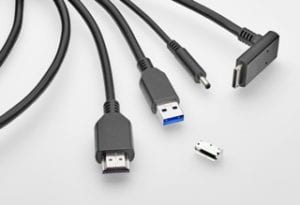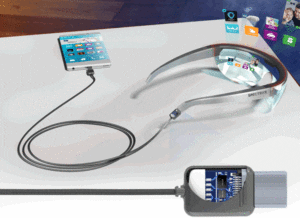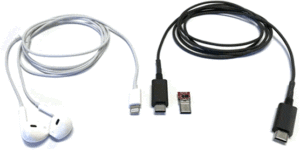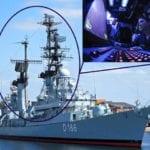Virtual Reality Isn’t Better than the Real Thing — Yet
Companies are working on new cable designs that will help move this promising technology beyond gaming and into the real world.

Virtual reality (VR) is one of the fastest-growing segments of the electronics arena, with implications for the industrial, medical, consumer, automotive, and other markets. This is a young and quickly evolving segment, with potential to transform applications across society. At the moment, however, much of the focus remains on VR equipment for the gaming world.
In 2012, the Oculus Rift Kickstarter campaign seemed to herald the coming of a new age in which technology would replace reality, at least for gamers. The flashy headset captured a great deal of attention and spurred a flurry of competitive activity, but high prices, uneven performance, and — dare we say it? — a lingering preference for actual reality has kept VR in the realm of developing technologies. However, continuing advances, falling prices, and expanding VR content mean that opportunities will continue to expand for the connector and cable assembly industry.
At CES 2018, VR met augmented reality (AR) as a wide variety of headsets made their debut, including ones that work in tandem with bodysuits equipped with sensors, transcutaneous electrical nerve stimulation (TENS) units, and electrical muscle stimulation (EMS) systems to provide a mind and body experience. As the electronics involved continue to become more refined, these integrated systems will take VR beyond gaming. They are already beginning to find use in the medical realm, for example, in areas such as PSTD treatment, pain management, neurological assessments, and surgical training.
VR equipment requires lightweight, miniature electronics that can support cameras, sensors, Wi-Fi, and Bluetooth, and move large amounts of data. Nimble cable solutions are a key part of these systems. TE Connectivity offers many products that can be used in VR applications, including spring-finger contacts, battery connectors, low-profile wire-to-board connectors, fine pitch board-to-board connectors, antennas, and sensors. Now the company is working on the next generation of VR cable assemblies to support higher data rates.

Cable assemblies for virtual reality by TE Connectivity.
“The VR cable solutions we see on the market are scattered. We found many vendors new to the VR market don’t pay enough attention to the cable assembly. It can be a long and costly process until they realize the crucial part that the cable assembly plays in the design,” said Rick Yang, product manager at TE Connectivity. “The purpose for this VR cable solution is to offer a proven and precisely specified product to help our customers to avoid wrong turns and shorten their go-to-market time.”
Yang says equipment costs and limitations have held back the growth of VR, but improving cabling solutions will be a significant step forward. The VR market has very specific requirements, and TE is working closely with customers to develop cable assemblies. “Technology will develop quickly and killer applications will pop up once customer experience passes a certain threshold. That is why we have continued to invest in this market. There are reasons to anticipate this market can outgrow most other consumer electronics, because it has the potential to have a complete ecosystem built around it, like mobile phones.”

Spectra7’s DreamWeVR™ products target VR applications.
Spectra7 Microsystems is another company that is counting on a virtual future. The company designs ultra-thin components for the VR, AR, and mixed reality (MR) markets, and makes chips that reduce the weight and thickness of cables used on VR headsets. At CES 2018, Spectra7 introduced new products and reference designs for VR, AR, and MR mobile-tethered, head-mounted displays (HMDs).
DreamWeVR™, an extensive product line targeted at next generation VR, AR, and MR platforms, includes four new chips to support high-bandwidth, low-latency VR HMDs and AR glasses. Spectra7’s VR8150 module specifically targets VR headset cabling by condensing four bulky cables — HDMI 2.0, USB 3.2, audio, and power — into a single, ultra-thin VR cable.
“Many virtual reality headsets are tethered to a computer or other hardware, and four cables introduce significant weight and mobility issues,” says John Mitchell, chief marketing officer at Spectra7.”

Mitchell says the new reference designs enable connectivity to smartphones that use USB Type-C connectors. These designs will support cables as thin as the earbud cables typically used for audio, yet they will be able to transmit vastly more information without feeling cumbersome to the user.
Ultimately, that’s the goal of the companies working on components for VR: To provide electronics that are powerful, yet so unobtrusive that the weight and reality of the equipment doesn’t remind the user that the real world still exists.
Recently posted:
[related_posts limit=”10″]
- Meet the Connector: DIN Standard Connectors - April 16, 2024
- Software-Driven Radio Reinvigorates Old Technology - April 9, 2024
- What is a Busbar? - April 2, 2024






